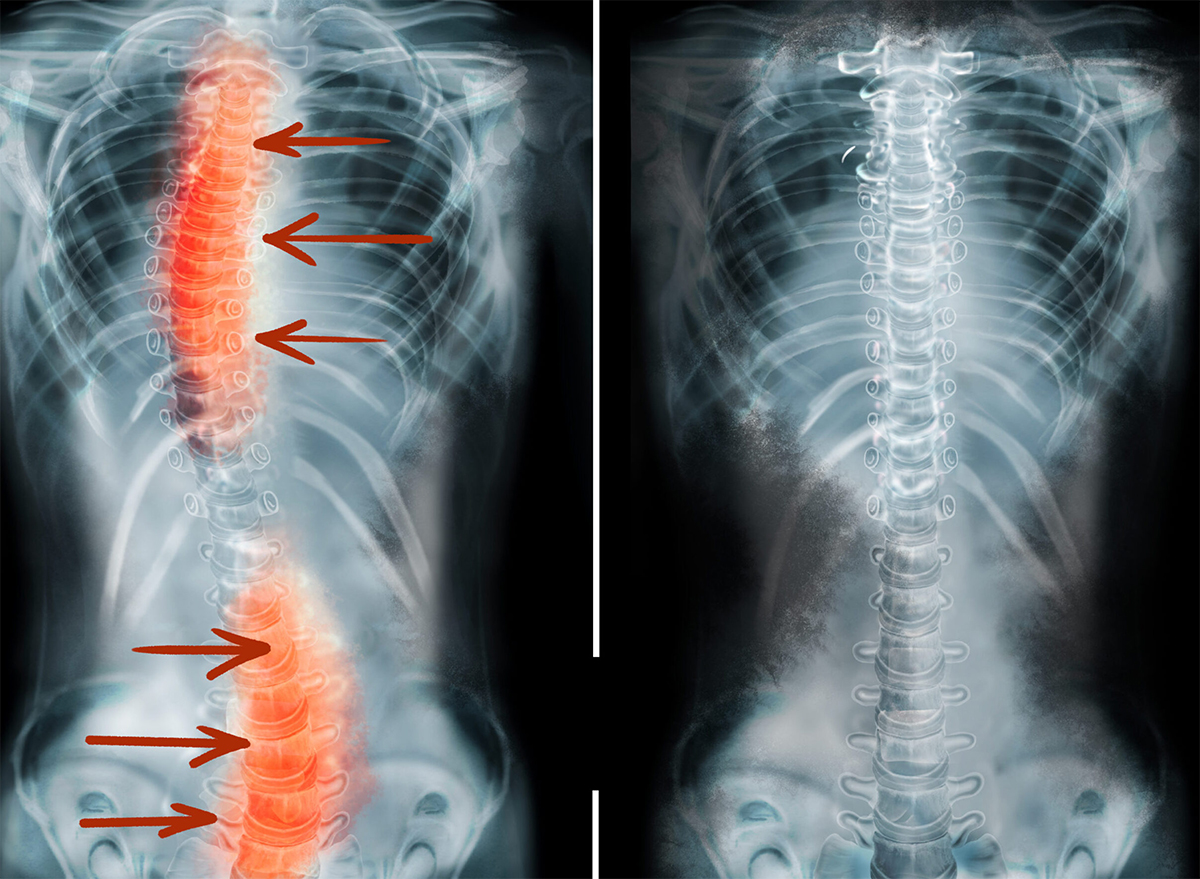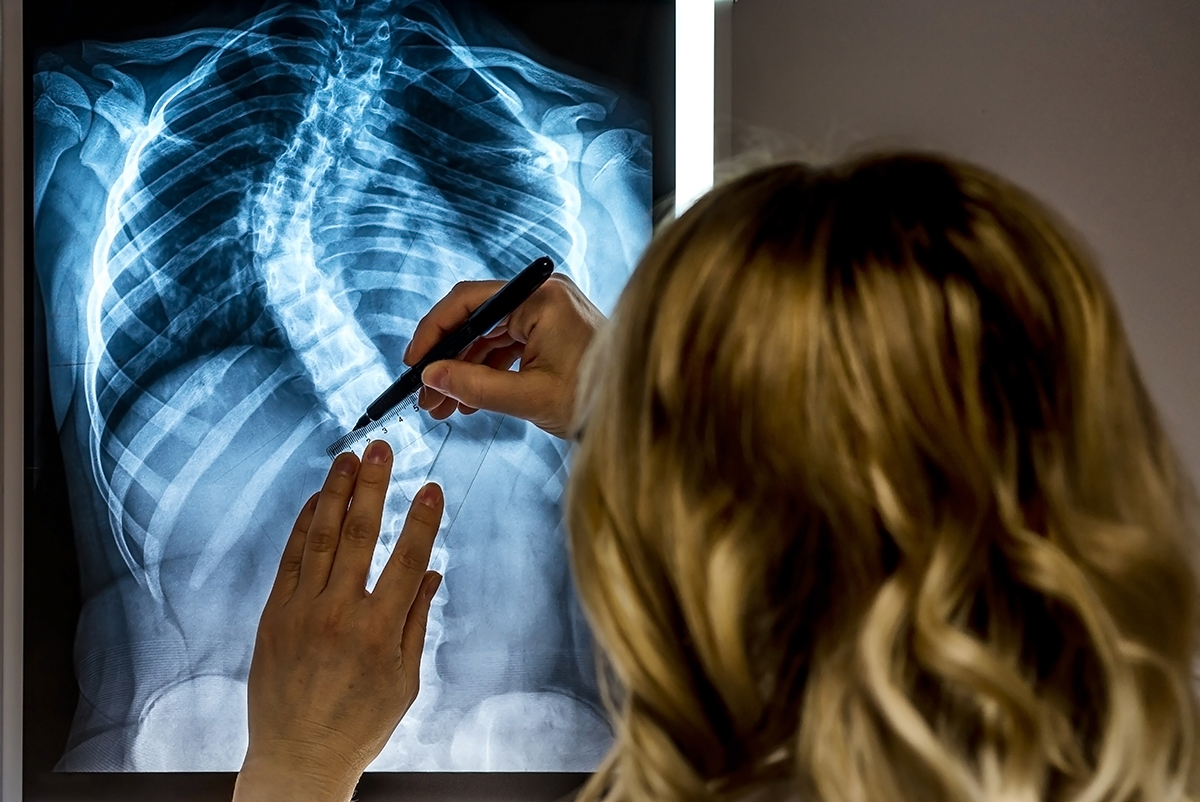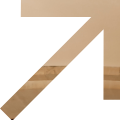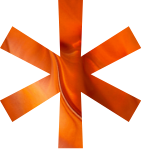Scoliosis After a Work Injury
Scoliosis, characterized by an abnormal curvature of the spine, presents unique challenges, especially when compounded by traumatic work-related injuries.
What is Scoliosis?
74,000 emergency room visits are made each year by adults with scoliosis in the US alone. [1]
Scoliosis is a prevalent medical condition characterized by an abnormal curvature of the spine. [2] When discussing scoliosis in the context of traumatic work injuries, it refers to cases where the curvature of the spine is either caused or exacerbated by a traumatic incident in the workplace. Traumatic work injuries can lead to various types of scoliosis, including:
Traumatic incidents such as falls, heavy lifting accidents, or repetitive strain injuries can accelerate degenerative changes in the spine. Degenerative scoliosis typically develops later in life as a result of wear and tear on the spine, and traumatic work injuries may contribute to its onset or progression.

Symptoms and Impact on Daily Life
Work-related injuries can exacerbate existing symptoms of scoliosis and impact daily activities, work performance, and overall quality of life.
Work-related injuries may intensify existing back pain and discomfort associated with scoliosis, impairing mobility and work productivity.
Individuals with scoliosis and work-related injuries may experience limitations in movement, flexibility, and physical endurance, affecting their ability to perform job duties effectively.
Chronic pain, functional limitations, and work-related stressors can contribute to psychological distress, anxiety, and depression, further exacerbating the impact of scoliosis and work injuries on daily life.
Diagnosis and Assessment
Diagnosing scoliosis in the context of work-related injuries requires a comprehensive evaluation to understand the interplay between spinal curvature, occupational demands, and injury mechanisms.
Gathering detailed information about the individual's occupation, work environment, job duties, and history of work-related injuries helps identify potential contributing factors to scoliosis development or progression.
Assessing functional limitations, work-related tasks, and ergonomic factors aids in understanding how work-related injuries impact spinal health and scoliosis management.
Utilizing imaging modalities such as X-rays, MRI scans, or CT scans allows for accurate assessment of spinal curvature, structural abnormalities, and injury-related changes in the spine.

Work Injuries and Scoliosis
Work-related injuries can significantly impact spinal health, exacerbating existing conditions such as scoliosis or contributing to the development of spinal abnormalities. Various factors in the workplace environment can increase the risk of spinal injury and scoliosis, including:
Accidents, falls, or repetitive strain injuries sustained in the workplace can impact spinal health and contribute to scoliosis development or progression. Traumatic injuries can lead to vertebral fractures, soft tissue damage, and spinal instability, increasing the likelihood of spinal curvature abnormalities.
Jobs requiring prolonged sitting or repetitive movements without proper ergonomic support may strain the spine, increasing the risk of spinal curvature abnormalities. Inadequate workstation setup, improper lifting techniques, and poor posture contribute to spinal stress and musculoskeletal strain, potentially exacerbating existing scoliosis or predisposing individuals to spinal abnormalities.
Occupations involving heavy lifting or manual labor may subject the spine to excessive stress and strain, potentially predisposing individuals to spinal curvature issues. Repetitive lifting, carrying, or pushing heavy loads can strain the muscles, ligaments, and discs of the spine, increasing the risk of spinal injury and scoliosis development.
Poor posture and improper body mechanics in the workplace can strain the spine and musculoskeletal system, leading to spinal misalignment and curvature. Prolonged periods of sitting or standing with poor posture, as well as repetitive movements without proper alignment, can contribute to muscle imbalances, spinal misalignments, and increased risk of scoliosis.
Common spinal conditions such as strains, sprains, herniated discs, and compression fractures can further compromise spinal health and increase the risk of scoliosis development or progression.


Challenges in Managing Scoliosis After a Work Injury
Managing scoliosis after a work injury poses unique challenges that require a comprehensive and multidisciplinary approach. Some challenges include:
Addressing pain resulting from both work injury and scoliosis requires careful coordination of pain management strategies, including medication, physical therapy, and chiropractic care.
Work-related injuries and scoliosis can lead to functional limitations that affect job performance and quality of life, necessitating tailored rehabilitation programs and workplace accommodations.
Coordinating treatment between healthcare providers, including chiropractors, physical therapists, and occupational therapists, is essential to optimize outcomes and ensure continuity of care for individuals with scoliosis and work-related injuries.
By understanding the relationship between work injuries and scoliosis and addressing the associated challenges, our chiropractors develop tailored treatment plans to promote spinal health, alleviate pain, and improve functional outcomes for individuals in the workplace.

Chiropractic Care for Scoliosis
Chiropractic treatment is based on the principle that proper spinal alignment and nervous system function are essential for overall health and well-being. At ProCare Chiropractor Center, we employ hands-on techniques, spinal adjustments, and rehabilitative exercises to restore proper spinal alignment, alleviate pain, and improve musculoskeletal function.
Chiropractic care for scoliosis focuses on improving spinal alignment, reducing curvature progression, and alleviating associated symptoms such as pain and muscle tension. Through targeted adjustments and spinal manipulation techniques, chiropractors aim to enhance spinal mobility, restore balance, and optimize nervous system function.
Chiropractic care for scoliosis is generally safe and well-tolerated when performed by qualified healthcare professionals. Chiropractors undergo extensive training and education to assess, diagnose, and treat spinal conditions effectively.
Research supports the effectiveness of chiropractic care as part of a multidisciplinary approach to scoliosis management. Studies have shown improvements in pain, function, and quality of life for individuals with scoliosis receiving chiropractic treatment, particularly when combined with other therapeutic modalities such as exercise therapy and postural training.
Our chiropractic care offers a non-invasive, drug-free approach to managing scoliosis symptoms, promoting spinal health, and enhancing overall well-being for individuals seeking alternative or complementary treatment options.
The Role of Chiropractic Care in Work Injury Rehabilitation
Chiropractic care plays a significant role in the rehabilitation of work-related injuries, including those affecting individuals with scoliosis.
Our chiropractic center provides numerous benefits for individuals recovering from work injuries and managing underlying spinal conditions.
Collaborative efforts between chiropractors, physical therapists, and other healthcare professionals ensure coordinated care and optimized outcomes for patients.
Chiropractic care focuses on addressing pain and discomfort associated with scoliosis and work injuries through targeted spinal adjustments, soft tissue mobilization, and therapeutic modalities. By relieving muscle tension, reducing inflammation, and restoring proper spinal alignment, chiropractors help alleviate pain and improve overall comfort for individuals undergoing rehabilitation.
Through gentle manipulation techniques, our chiropractors correct spinal misalignments, reduce curvature abnormalities and restore balance and stability to the spine, enhancing overall movement and function.
We not only address physical symptoms but also promote overall well-being and quality of life for individuals recovering from work-related injuries. By addressing the underlying causes of pain and dysfunction, we help patients regain confidence, independence, and vitality, enabling them to return to work and daily activities with renewed energy and resilience.

Benefits of Chiropractic Adjustments for Scoliosis Patients
Chiropractic adjustments offer numerous benefits for individuals with scoliosis, including:
Chiropractic adjustments can help alleviate back pain, muscle tension, and discomfort associated with scoliosis, improving overall comfort and quality of life.
By restoring proper spinal alignment and reducing muscular imbalances, chiropractic care can enhance spinal mobility and flexibility, enabling individuals to perform daily activities with greater ease and efficiency.
While chiropractic adjustments may not reverse spinal curvature, they can help manage curvature progression and prevent further deterioration, especially when integrated into a comprehensive treatment plan.
Are You Suffering From Scoliosis Caused by Your Work Environment?
Schedule an appointment with ProCare Chiropractic Center today and take the first step towards living a pain-free and more comfortable life.
Sources:
[1] Scoliosis Statistics. (2016, February 4). CLEAR Scoliosis Institute. https://clear-institute.org/learning-about-scoliosis/scoliosis-statistics/
[2] Branch, N. S. C. A. O. (2023, December 15). NIAMS Health Information on Scoliosis. National Institute of Arthritis and Musculoskeletal and Skin Diseases. https://www.niams.nih.gov/health-topics/scoliosis

